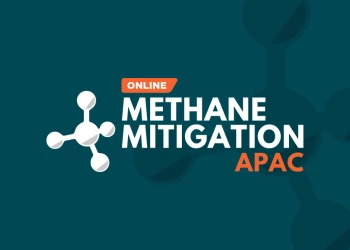HSE Update: Accepting The Unacceptable
Add bookmarkThe main concern in the message is that there has been an improvement with a reduction in the number of dangerous occurrences. This optimistic message may give the reader a false sense of security that all is well with the world offshore. So let us analyse the raw data to see what improvement really means in the context of the published HSE data.
The reality is that there is a small, but from a risk reduction perspective negligible, reduction in risk from the reported fall in dangerous occurrences from 443 to 432. 443 events gave a mean time between dangerous occurrences offshore of circa 20 hours. This year’s improvement only extends the time between dangerous occurrences by 30 minutes.
One of the biggest concerns offshore on the confined space provided on an installation are hazards associated with the loss of containment of hydrocarbons, namely, escalating hydrocarbon events which threaten the Temporary Refuge, and the installation escape and evacuation routes, should these hydrocarbons ignite with explosive force. Major and Significant hydrocarbon releases have the potential by their definition to cause escalating hydrocarbon events.
So with this in mind and considering allhydrocarbon releases there were 168 last year or one every 52 hours on average. 73 of these releases were major or significant with one happening every 5 days on average.
The reduction in these releases from 85 last year to 73 this year is a trend in the right direction but in reality is an improvement from one unacceptable number of releases to another unacceptable level.
The bottom line is, and even if we ignore the minor leaks of hydrocarbons, we are still passing red signals offshore on average once every 5 days.
When determining levels of risk these are driven by the probability of a hydrocarbon release, which from the HSE data appears intolerably high, and the potential consequences of that release whether Major, Significant or Minor. Any application of a formal quantitative risk analysis would determine negligible difference in the risk levels between the 85 releases and the 73 releases. From a risk perspective this difference is statistically insignificant.
So the reduction from 85 to 73 is an undeniable improvement. But the risk levels which workers are exposed to remain unaltered by this improvement. This message is not one that employees offshore or the greater general publicin the UK are receiving – no doubt they equate press releases trumpeting improvement with reducing risk levels, and reducing risk levels significantly.
Of the 168 hydrocarbon releases last year 5 ignited. These ignitions luckily had no serious consequences this time but circa three in a hundred releases found a source of ignition last year.
The most powerful data that can be used in any risk analysis is historic data from actual events. So the analyst would determine in this region of the World, in this industry, have hydrocarbon releases caused fatalities and serious asset damage. In 1982 three fatalities resulted from an explosion on Cormorant Alpha when gas entered into a utility module. No gas had ever entered this module before - this was the first time. So the simple message is that you do not need 73 releases, if fate determines such, you just need one.
In 1988 a major explosion occurred in the Brent Alpha gas compression module. This was only the second time that a major leak had occurred in this module, luckily no one was in the module at the time.
Only 24 hours after the Brent Alpha explosion a major gas leak occurred on Piper Alpha when gas entered the control room where there were sources of ignition. The public inquiry, which created the Safety Case regime that now exists, found that some years earlier a major gas leak had occurred on Piper but had not ignited. So the worst disaster in the oil and gas industry resulted from only the second undesirable event. Unfortunately the second, unlike the first, had such catastrophic consequences.
In 1989 a major leak of gas occurred on Cormorant Alpha when gas flooded into the concrete column C4. This ignited some 4 hours later with workers still at emergency stations so no fatalities resulted. This was the first time that a gas release had happened in this enclosed column.
In 1992, gas got into the service water system on Fulmar and entered by this route into the living quarters via the toilet system, the gas was ignited by a person smoking. This was the first time gas had ever entered a living quarters and luckily no one was hurt due to the low volumes of gas present.
In 2003, over 6000 cubic metres of rich hydrocarbons flooded a concrete column of Brent Bravo, although it did not ignite, such was the volume of the gas, that derived of oxygen, two workers died.
The historic data tells us unequivocally that any single hydrocarbon release is unacceptable because it can have catastrophic consequences.
Over the last couple of years the HSE data records 158 major and significant gas releases which have had no serious consequences in terms of fatalities or asset damage. So we passed 158 red signals without incident, how could this happen. Well we got lucky, it’s as simple and straightforward as that. The gamble paid off.
But the history from offshore UK tells us that if something undesirable can happen, then it will, and often when we least expect it, and are least prepared.
As human beings we have a remarkable tendency to forget the past and be optimistic that because things happened in the past it does not necessarily mean it will happen in the future, surely our robust safety cases will protect us.
The offshore oil and gas industry plans to cut hydrocarbon releases by 50% by 2012, but this improvement, even if it is possible to achieve, still means one major or significant hydrocarbon release on average every 10 days rather than every 5 days at present.
So the industry for many years ahead, or till the next major accident event, will continue to accept the unacceptable, with fingers crossed.
Surely we cannot go on being lucky forever, can we?
All Dangerous Occurrences:
|
Dangerous Occurrences period 2009/10 |
Mean Time between Occurrences (Hours) |
Dangerous Occurrences period 2010/11 |
Mean Time between Occurrences (Hours) |
Improvement as measured by extending the period between occurrences (Minutes) |
|
443 |
19.8 |
432 |
20.3 |
30 |
All Dangerous Occurrences due to Major, Significant and Minor Hydrocarbon releases
|
All dangerous occurrences caused by Hydrocarbon Releases whether Major, Significant or Minor for period 2010/11 |
Mean Time between total of Dangerous Occurrences caused by Hydrocarbon Releases (Hours) |
|
168 or 39% |
52 |
Dangerous Occurrences due to Major & Significant Hydrocarbon releases only
|
Dangerous Occurrences caused by Major and Significant Hydrocarbon Releases period 2009/10 |
Mean Time between these Hydrocarbon Releases (Days) |
Dangerous Occurrences caused by Major and Significant Hydrocarbon Releases period 2010/11 |
Mean Time between these Hydrocarbon Releases (Days) |
Improvement as measured by extending the period between occurrences (Hours) |
|
85 |
4.3 |
73 |
5 |
17 |
Ignited Hydrocarbon Releases
|
Hydrocarbon Releases whether Major, Significant or Minor for period 2010/11 which ignited |
Mean Time between Hydrocarbon Releases which ignited (Days) |
|
5 or 3% of total |
73 |
Dangerous Occurrences due to Equipment Failure
|
All dangerous occurrences caused by Equipment Failure for period 2010/11 |
Mean Time between dangerous occurrences caused by Equipment Failure (Hours) |
|
112 or 26% |
78 |
HSE Severity Classification of Hydrocarbon Releases
Hydrocarbon releases are regarded as potential precursors to major accidents if ignited, and HSE monitors the number of major & significant hydrocarbon releases as a key performance indicator of the offshore industry’s effectiveness regards health and safety management on offshore installations.
MAJOR:
Has the potential to quickly impact outwith the local area e.g. affect the TR, escape routes, escalate to other areas of the installation, causing serious injury or fatalities. A major leak, if ignited, would be likely to cause a major accident, that is it would be of a size capable of causing multiple casualties or rapid escalation affecting TR, escape routes, etc.
SIGNIFICANT:
Has the potential to cause serious injury or fatality to personnel within the local area and to escalate within that local area e.g. by causing structural damage, secondary leaks or damage to safety systems. A significant leak, if ignited, might have the potential to cause an event severe enough to be viewed as a major accident or be of a size leading to significant escalation within the immediate area or module.
MINOR:
Has the potential to cause serious injury to personnel in the immediate vicinity, but no potential to escalate or cause multiple fatalities.
A minor leak, even if ignited, would not be expected to result in a multiple fatality event or significant escalation, but could cause serious injuries or a fatality local to the leak site or within that module only.
[eventpdf]
















